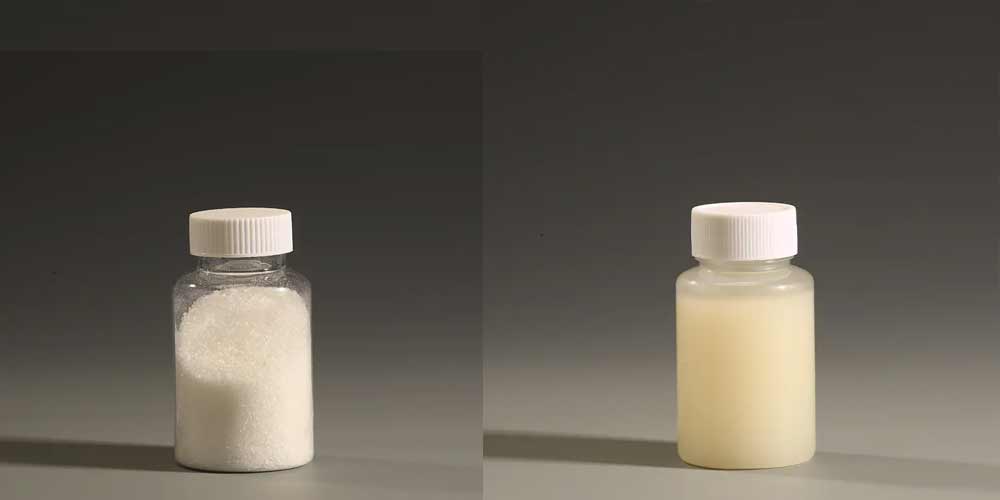ΠολυακρυλαμίδιοΤο PAM (PAM) είναι ένα ευέλικτο πολυμερές που χρησιμοποιείται ευρέως στην επεξεργασία νερού, την χαρτοποιία, την εξόρυξη πετρελαίου και άλλους τομείς. Σύμφωνα με τις ιοντικές του ιδιότητες, το PAM χωρίζεται σε τρεις κύριους τύπους: κατιονικό (Cationic PAM, CPAM), ανιονικό (Anionic PAM, APAM) και μη ιονικό (Nonionic PAM, NPAM). Αυτοί οι τρεις τύποι έχουν σημαντικές διαφορές στη δομή, τη λειτουργία και την εφαρμογή.
1. Κατιονικό πολυακρυλαμίδιο (Κατιονικό PAM, CPAM)
Δομή και ιδιότητες:
Κατιονική PAM: Είναι μια γραμμική πολυμερική ένωση. Επειδή έχει μια ποικιλία δραστικών ομάδων, μπορεί να σχηματίσει δεσμούς υδρογόνου με πολλές ουσίες και κυρίως να συσσωματώσει αρνητικά φορτισμένα κολλοειδή. Κατάλληλο για χρήση σε όξινες συνθήκες.
Εφαρμογή:
- Επεξεργασία λυμάτων: Το CPAM χρησιμοποιείται συχνά για την επεξεργασία αρνητικά φορτισμένων οργανικών λυμάτων, όπως αστικά λύματα, λύματα επεξεργασίας τροφίμων κ.λπ. Τα θετικά φορτία μπορούν να συνδυαστούν με αρνητικά φορτισμένα αιωρούμενα σωματίδια για να σχηματίσουν κροκίδες, προωθώντας έτσι τον διαχωρισμό στερεών-υγρών.
- Βιομηχανία χαρτιού: Στη διαδικασία παραγωγής χαρτιού, το CPAM μπορεί να χρησιμοποιηθεί ως ενισχυτικό και συγκρατητικό μέσο για τη βελτίωση της αντοχής και του ρυθμού συγκράτησης του χαρτιού.
- Εξόρυξη πετρελαίου: Σε πετρελαιοπηγές, το CPAM χρησιμοποιείται για την επεξεργασία λάσπης γεώτρησης για τη μείωση της διήθησης και την πήξη.
2. Ανιονικό πολυακρυλαμίδιο (Ανιονικό PAM, APAM)
Δομή και ιδιότητες:
Η ανιονική PAM είναι ένα υδατοδιαλυτό πολυμερές. Με την εισαγωγή αυτών των ανιονικών ομάδων στον σκελετό του πολυμερούς, η APAM μπορεί να αντιδράσει με θετικά φορτισμένες ουσίες. Χρησιμοποιείται κυρίως για κροκίδωση, καθίζηση και διαύγαση διαφόρων βιομηχανικών λυμάτων. Κατάλληλο για χρήση σε αλκαλικές συνθήκες.
Εφαρμογή:
- Επεξεργασία νερού: Το APAM χρησιμοποιείται ευρέως στην επεξεργασία πόσιμου νερού και βιομηχανικών λυμάτων. Μπορεί να συμπυκνώσει αιωρούμενα σωματίδια μέσω ηλεκτρικής εξουδετέρωσης ή προσρόφησης, βελτιώνοντας έτσι τη διαύγεια του νερού.
- Βιομηχανία χαρτιού: Ως βοήθημα συγκράτησης και φιλτραρίσματος, το APAM μπορεί να βελτιώσει την απόδοση φιλτραρίσματος νερού του χαρτοπολτού και την αντοχή του χαρτιού.
- Εξόρυξη και Επεξεργασία Μεταλλεύματος: Κατά την επίπλευση και την καθίζηση του μεταλλεύματος, το APAM μπορεί να προωθήσει την καθίζηση των σωματιδίων του μεταλλεύματος και να βελτιώσει τον ρυθμό ανάκτησης του μεταλλεύματος.
- Βελτίωση εδάφους: Το APAM μπορεί να βελτιώσει τη δομή του εδάφους, να μειώσει τη διάβρωση του εδάφους και χρησιμοποιείται ευρέως στη γεωργία και την κηπουρική.
3. Μη ιονικό πολυακρυλαμίδιο (μη ιονικό PAM, NPAM)
Δομή και Ιδιότητες:
Η μη ιονική PAM είναι ένα πολυμερές ή πολυηλεκτρολύτης υψηλού μοριακού βάρους με μια ορισμένη ποσότητα πολικών γονιδίων στην μοριακή του αλυσίδα. Μπορεί να προσροφήσει στερεά σωματίδια που αιωρούνται στο νερό και να γεφυρώσει μεταξύ των σωματιδίων για να σχηματίσει μεγάλα συσσωματώματα, να επιταχύνει την καθίζηση των σωματιδίων σε αιώρημα, να επιταχύνει τη διαύγαση του διαλύματος και να προωθήσει τη διήθηση. Δεν περιέχει φορτισμένες ομάδες και αποτελείται κυρίως από αμιδικές ομάδες. Αυτή η δομή την καθιστά καλή διαλυτότητα και σταθερότητα υπό ουδέτερες και ασθενώς όξινες συνθήκες. Η μη ιονική PAM έχει τα χαρακτηριστικά του υψηλού μοριακού βάρους και δεν επηρεάζεται σημαντικά από την τιμή του pH.
Εφαρμογή:
- Επεξεργασία Νερού: Το NPAM μπορεί να χρησιμοποιηθεί για την επεξεργασία νερού χαμηλής θολότητας και υψηλής καθαρότητας, όπως οικιακό νερό και πόσιμο νερό. Το πλεονέκτημά του είναι ότι έχει ισχυρή προσαρμοστικότητα στις αλλαγές στην ποιότητα και το pH του νερού.
- Κλωστοϋφαντουργική και βαφική βιομηχανία: Στην επεξεργασία υφασμάτων, το NPAM χρησιμοποιείται ως πυκνωτικό και σταθεροποιητής για τη βελτίωση της πρόσφυσης της βαφής και της ομοιομορφίας της βαφής.
- Μεταλλουργική βιομηχανία: Το NPAM χρησιμοποιείται ως λιπαντικό και ψυκτικό μέσο στην επεξεργασία μετάλλων για τη μείωση της τριβής και τη βελτίωση της αποδοτικότητας της επεξεργασίας.
- Γεωργία και κηπουρική: Ως ενυδατικό εδάφους, το NPAM μπορεί να βελτιώσει την ικανότητα συγκράτησης νερού του εδάφους και να προωθήσει την ανάπτυξη των φυτών.
Το κατιονικό, το ανιονικό και το μη ιονικό πολυακρυλαμίδιο έχουν διαφορετικά πεδία εφαρμογής και επιδράσεις λόγω της μοναδικής χημικής δομής και των χαρακτηριστικών φορτίου τους. Κατανόηση και επιλογή του κατάλληλουΠΑΜΟ τύπος μπορεί να βελτιώσει σημαντικά την αποδοτικότητα και τα αποτελέσματα της επεξεργασίας για να καλύψει τις ανάγκες διαφορετικών βιομηχανιών.
Ώρα δημοσίευσης: 11 Ιουνίου 2024


